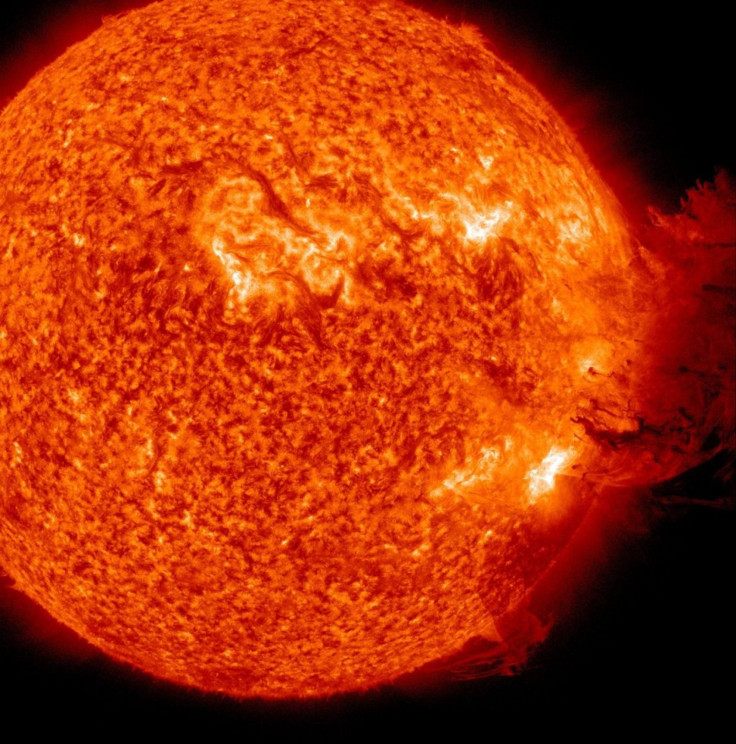Powerful Magnetic Waves Behind Sun?s Coronal Heating Mystery?

One of the biggest questions physicists usually face is why the sun's corona -- its outer atmosphere -- is so hot, but it seems the latest research may bring them one step closer to solving the mystery.
The solar corona visible during total eclipses as a bright halo around the sun. The sun's surface is about 5,800 degrees Kelvin, or about 10,000 Fahrenheit. But the corona, which extends several times the radius of the sun into space, is orders of magnitude hotter, reaching millions of degrees.
Researchers from National Center for Atmospheric Research (NCAR) have now found strong evidence to suggest powerful magnetic field ripples, called Alfven waves, might be driving the solar wind and heating much of the corona.
Using NASA’s Solar Dynamics Observatory (SDO), the researchers able to track the movements of this solar “seaweed” and measure how much energy is carried by the Alfvén waves. The scientists found that magnetic oscillations carrying energy from the Sun's surface into its corona are far more vigorous than previously thought.
"The new satellite observations are giving us a close look for the first time at how energy and mass move through the Sun's outer atmosphere," says Scott McIntosh, the study's lead author and a scientist at NCAR's High Altitude Observatory in press release.
Alfven waves were directly observed for the first time in 2007 in the chromospheres. The observations showed amplitudes on the order of about 1,600 feet (0.5 kilometers) per second, far too small to heat the corona to its high levels or to drive the solar wind.
Now the latest study reveals that Alfven waves that are over a hundred times stronger than previously measured, with amplitudes on the order of 12 miles (20 km) per second—enough to heat the Sun's outer atmosphere to millions of degrees and drive the solar wind. The waves are easily seen in high-resolution images of the outer atmosphere as they cause high-speed jets of hot material, called spicules, to sway.
"We now understand how hot mass can shoot upward from the solar interior, providing enough energy to maintain the corona at a million degrees and fire off particles into the high-speed solar wind. This new research will help us solve essential mysteries about how energy gets out of the Sun and into the solar system," McIntosh added.
"Understanding solar processes advances our knowledge of Earth-Sun interactions, providing insights on how UV radiation generated by solar storms affects the Earth's upper atmosphere, stratospheric ozone and — potentially — global climate dynamics over both short and longer time scales," McIntosh explained.
© Copyright IBTimes 2024. All rights reserved.











